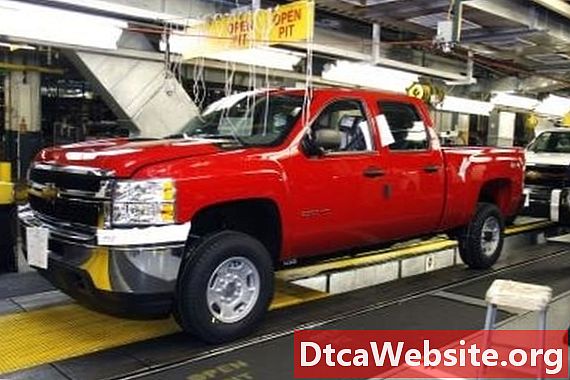
Contenu
- Basic Difference
- First Generation - 1960 to 1966
- Second Generation - 1967 to 1972
- Third Generation - 1973 to 1987
- Fourth Generation - 1988 to 2000

Chevrolets C- and K-series truck line is one of the oldest and most storied of all the companys offerings, remaining in production for every bit as long as the Camaro. Modularity and adaptability were key components to the trucks success; GM offered the chassis in dozens of different configurations to suit every need. The C15 and K15 (or C1500 and K1500) designations marked rides so-named as 1/2-ton models.
Basic Difference
The primary difference between a "C" and "K" truck is that C-models are two-wheel drive and K-models are four-wheel drive. In most other ways, the chassis are similar, with the same basic options, engines, transmissions and amenities over most of the range. The biggest differences lie in the four-wheel-drive components and associated suspension package.
First Generation - 1960 to 1966
GM didnt use the "C" as the "conventional" designation for the earliest of their two-wheel drive pickups, as it just stands for two-wheel drive. Chevrolet prefaced the trucks numerical rating with a "K" to signify four-wheel drive models. The 10- and 20-series pickups got coil springs all around, and 30-series trucks got leaf springs in the rear. Aside from the transfer case and front axle, C- and K-series trucks were practically identical.
Second Generation - 1967 to 1972
Oddly enough, the four-wheel-drive K-series was 5-1/2 inches lower than the two-wheel-drive models, but a transmission-mounted transfer case allowed engineers to retain the same 12-1/2 inch ground clearance of previous models. Chevrolets 400-cubic-inch big-block was an option on all but the 1971 K-series trucks.
Third Generation - 1973 to 1987
All C- and K-series trucks got a new high-strength frame, upgraded Hydro-Boost brakes and a choice of six- or eight-cylinder engines. The K-series new-process NP205 transfer case remained tucked up close to the trucks floorboard, and the K-series utilized a front leaf spring suspension instead of the C-series independent setup. The K-Series also came with an optional part-time four-wheel-drive system, and all K-series models used steel covers and skid plates to protect exposed brake lines and underbody components. The 1977 and later K-series got a heavy-duty Dana 60 front axle, while 1981 and later models received a new "shift-on-the-fly" aluminum transfer case and automatic locking hubs. Diesels were an option on two-wheel-drive models only until 1982.
Fourth Generation - 1988 to 2000
GM dropped the live front axle for its new GMT400 platform, opting instead for a four-wheel independent arrangement. The four-wheel drive sports appearance package was an option on four-wheel-drive models only, and consisted mainly of black bumpers and trim, wheel flares, mirrors and custom-made 16-inch aluminum rims. Aside from the transfer case and required drivetrain, fourth-generation C- and K-series trucks were almost identical.


